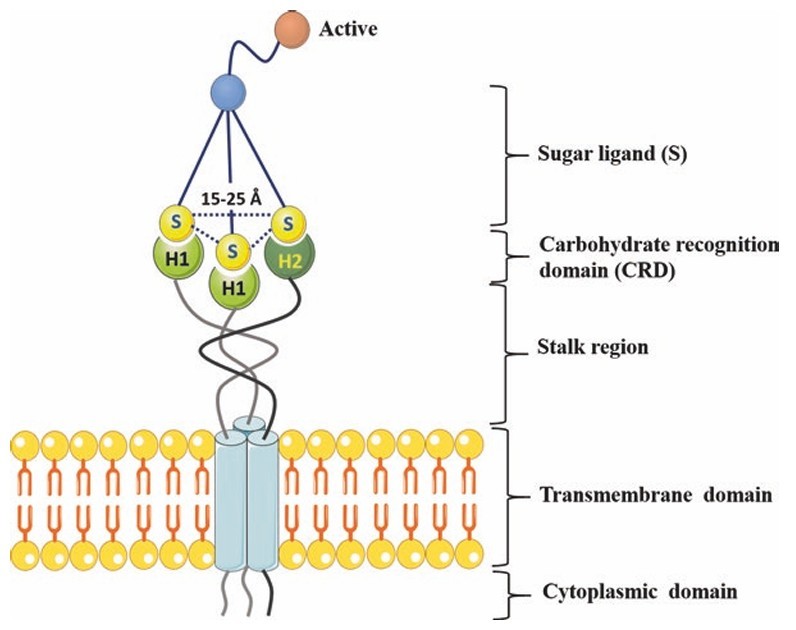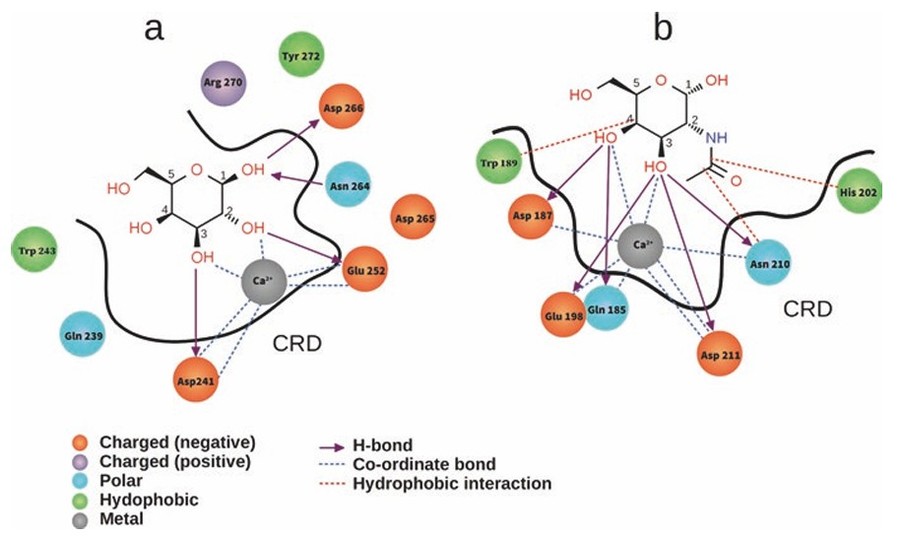| Catalog# | Product Name | Size | Price | Qty | Inquiry |
|---|---|---|---|---|---|
| THP-0052 | Recombinant Human F8/Antihemophilic factor | 100IU | $698.00 |
|
Add to Cart Order |
| THP-0085 | Moroctocog alfa (BDDrFVIII) | 100IU | $998.00 |
|
Add to Cart Order |
| 1,000IU | $3,998.00 |
|
Add to Cart Order | ||
| THP-0216 | Lonoctocog alfa, Recombinant Factor VIII | 1 vial | $3,998.00 |
|
Add to Cart Order |
Asialoglycoprotein receptor 2 (ASGR2), a member of the asialoglycoprotein receptor family, is a key component of the hepatic glycoprotein clearance system. By recognizing desialylated glycoproteins, ASGR2 facilitates their endocytosis and lysosomal degradation. This receptor has attracted considerable attention as a drug target due to its liver-specific expression, high endocytic capacity and involvement in numerous physiological and pathological processes. Therapeutic applications targeting ASGR2 have shown promise, particularly in the treatment of hemophilia through the delivery of recombinant therapeutic proteins such as recombinant human factor VIII (F8), moroctocog alfa and lonoctocog alfa.
NCBI Gene ID: 433
UniProtKB ID: P07307
ASGR2 is a key component of the asialoglycoprotein receptor (ASGPR) complex, primarily expressed on hepatocytes. This receptor system is essential for the clearance of desialylated glycoproteins from the bloodstream. Structural Features of ASGR2:
 Figure 1. Schematic representation of ASGP-R,
illustrating the hetero-oligomer composed of two H1 and one H2 subunit, each of them containing four domains. (Das et al., 2019)
Figure 1. Schematic representation of ASGP-R,
illustrating the hetero-oligomer composed of two H1 and one H2 subunit, each of them containing four domains. (Das et al., 2019)
ASGR2 is a C-type lectin receptor that binds ligands with high specificity and affinity. The carbohydrate recognition domain of the receptor interacts with galactose or N-acetylgalactosamine on glycoproteins, triggering receptor-mediated endocytosis. Once internalized, the ligand-receptor complex is trafficked to early endosomes where the acidic environment promotes ligand dissociation. The receptor is recycled back to the plasma membrane, while the ligands are targeted to lysosomes for degradation. This recycling efficiency underscores ASGR2's capacity as a drug delivery receptor, allowing for repeated use without receptor saturation.
 Figure 2. Molecular interaction between (a)
D-galactose and (b) acetyl-galactosamine at the active binding site (CRD) of ASGP-R. (Das et al., 2019)
Figure 2. Molecular interaction between (a)
D-galactose and (b) acetyl-galactosamine at the active binding site (CRD) of ASGP-R. (Das et al., 2019)
ASGPR has a high affinity for glycoproteins that expose terminal galactose or N-acetylgalactosamine residues. By conjugating therapeutic agents to ligands containing these sugar moieties, it is possible to target drugs specifically to hepatocytes. Upon binding to ASGPR, the receptor-ligand complex undergoes endocytosis, delivering the therapeutic payload directly into the liver cells.
 Figure 3. Graphic abstract of asialoglycoprotein
receptor mediated hepatocyte targeting. (D'Souza and Devarajan, 2015)
Figure 3. Graphic abstract of asialoglycoprotein
receptor mediated hepatocyte targeting. (D'Souza and Devarajan, 2015)
ASGPR-mediated targeting holds great promise for the treatment of liver-specific diseases, including viral hepatitis, liver fibrosis and hepatocellular carcinoma. By ensuring precise delivery of therapeutics to hepatocytes, this strategy aims to maximize therapeutic efficacy while minimizing off-target effects.
Hemophilia A, characterized by a deficiency in coagulation factor VIII, is managed through replacement therapy using recombinant factor VIII (rFVIII). ASGR2 plays a critical role in the hepatic uptake and clearance of rFVIII, influencing its half-life and therapeutic efficacy. Recent advancements in rFVIII design have optimized ASGR2 interactions to improve stability and bioavailability.
The liver-specific expression of ASGR2 minimizes off-target effects, making it an ideal receptor for targeted drug delivery. In addition, its high endocytic capacity allows for efficient drug internalization, enhancing therapeutic protein uptake and reducing systemic exposure. In hemophilia A, ASGR2 targeting has improved the pharmacokinetics of rFVIII, resulting in reduced dosing frequency and improved patient compliance.
As a top supplier of therapeutic proteins, Creative BioMart offers recombinant human F8/Antihemophilic Factor, moroctocog alfa (BDDrFVIII) and lonoctocog alfa (recombinant Factor VIII) targeting ASGR2 for the treatment of hemophilia A. Contact us for more information!
References
For more information on how our products could help advance your project, please contact us.
ENTER YOUR EMAIL HERE TO SUBSCRIBE.
Copyright © 2025 Creative BioMart. All Rights Reserved.